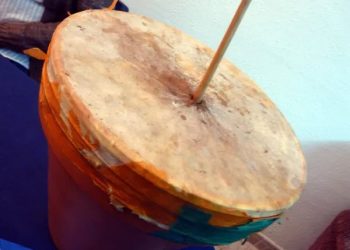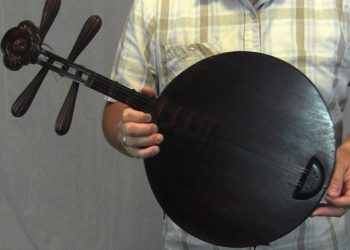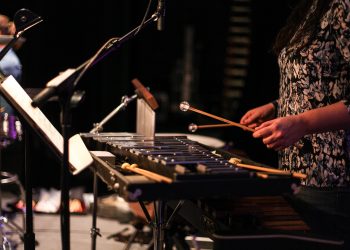Music is a universal language that connects people from all over the world. It has been an integral part of human culture for centuries, with thousands of different instruments that produce a vast array of sounds and rhythms. In this article, we will explore the top 10 musical instruments that start with the letter “I”. From the majestic and powerful sounds of the “Irish Bodhran” to the ethereal and meditative notes of the “Indian Bansuri,” we will take a journey through some of the most unique and fascinating musical instruments from around the world.
Through this list, we hope to showcase the diversity of musical traditions and the innovative ways in which they have been adapted over time. We will cover a range of instruments, from the well-known and widely used to the more obscure and regional. We’ll discover the history and cultural significance of each instrument, and explore the techniques used to play them.
Whether you’re a music lover, musician, or simply curious about the world’s diverse musical heritage, this article is sure to take you on a captivating journey of discovery. So, let’s dive into the fascinating world of musical instruments that start with the letter “I.”
1. Ichigenkin
The ichigenkin is a traditional Japanese stringed instrument that has been played for centuries. It consists of two strings, each made from silk thread, stretched over an oval-shaped wooden body. The strings are plucked with the fingers and create a unique sound when they vibrate. This mesmerizing sound has been used in many different genres of music, such as classical, folk, and pop.
Unlike other string instruments like the guitar or violin, playing the ichigenkin doesn’t require any special skills; anyone can learn to play it quickly. All you need is time and patience to master its simple yet beautiful sounds. With practice, even beginners can produce melodic tunes that evoke emotions within listeners.
The ichigenkin also offers a way to express yourself musically through improvisation — something western instruments lack due to their complex structure and restricted range of notes. The wide variety of rhythms one can achieve on this miniature instrument makes it possible for players to explore their creativity and give life to new harmonies.
No matter what your musical preference or skill level is, there’s no denying that the enchanting tones created by the ichigenkin will bring out another side of you as a musician – one full of imagination and soulful expression.
2. Idiophones
As the icyembe allows for expressive musical improvisation, another instrument worth exploring is idiophones. These are instruments that produce sound by vibrating themselves without any strings or membranes attached – each one has its own unique timbre and tonal range. Examples of idiophones include bells, xylophones, wood blocks, gongs, and more.
Idiophones can be used to create a variety of sounds depending on how they’re played: from clashing cymbals to ringing chimes. They also offer musicians the opportunity to add texture and ambience to their performance with minimal effort – making them ideal for creating hypnotic grooves and atmospheric passages.
The versatility of idiophones makes them an excellent choice for those looking to experiment with music-making. Whether it’s traditional folk tunes or modern jazz compositions – adding this type of instrument can take your songs in exciting new directions! And since most are relatively easy to learn, anyone can start using them right away – no special training required.
With so many sonic possibilities at hand, it’s no wonder why people have been drawn to these fascinating instruments throughout history. From ancient ceremonies to today’s high-tech studios, idiophones bring an unparalleled level of creativity and expression into any musical setting – allowing us all to explore endless avenues of exploration when we make music together!
3. Ieta
One of the most intriguing instruments in this category is the ieta – a traditional West African percussion instrument made from wood and animal hide. Its distinct sound has been described as both primal and haunting, with tones that are deep yet melodic. The ieta was originally used for ceremonial purposes, but it’s now become popular among modern musicians looking to explore new sounds.
The beauty of the ieta lies in its simplicity: all you need is two sticks and some skillful hand-eye coordination! By striking one stick against the other, players can create complex rhythms that range from steady beats to seemingly chaotic patterns. This gives them an incredible amount of freedom when crafting their own compositions – allowing them to experiment with different tempos and timbres to get just the right effect they’re after.
What’s more, the ieta has a surprisingly versatile range of applications. It can be used in solo performances or incorporated into larger ensembles; as a lead instrument or as part of intricate percussive arrangements; even as accompaniment for vocalists or instrumentalists. No matter how it’s played, though, it always adds something special to any musical setting – adding depth and energy while still leaving plenty of room for personal expression.
The ieta is proof that sometimes simple solutions yield big results. With its captivating soundscape and limitless potential for creativity, it’s no wonder why this humble little drum is so beloved by musicians around the world! Whether you choose to use it alone or alongside other instruments—the possibilities are endless when playing this timeless classic.
4. Igil
The igil is another traditional instrument that has captivated musicians for centuries. Originating in the Tuvan region of Siberia, this two-stringed lute produces a distinctive buzzy sound thanks to its unique construction: it’s made from birch tree wood and horsehair strings, which create an ethereal yet powerful tone. Unlike the ieta, there’s no need for drum sticks; instead players use their fingers to pluck the strings at varying intensities. This gives them more control over dynamics – allowing them to create subtle gradations in volume or even shift between staccato and legato playing styles with ease.
What really sets the igil apart is its ability to evoke strong emotions through its haunting melodies. Its plaintive timbre can conjure feelings of longing, sadness and joy all at once – making it perfect for expressing heartfelt sentiments without words. This quality also makes it ideal as accompaniment to vocalists, who can take advantage of its emotive qualities while singing poignant lyrics. In addition, many modern composers have found innovative ways to incorporate the igil into larger ensembles, using its unique tones to add texture and character to complex arrangements.
From intimate solo performances to grand orchestral pieces, the igil brings something special wherever it goes. It’s easy enough for beginners but offers challenges for experienced players looking to explore new ideas – so regardless of your skill level you’re sure find plenty of inspiration when playing this extraordinary instrument! Whether you choose to perform alone or alongside others, one thing’s certain: every performance will be truly unforgettable thanks to the remarkable sounds of the igil.
No matter how you decide to play it though—whether quietly strumming chords or creating intricate rhythms–the igil always adds an unmistakable atmosphere that speaks directly to your heart and soul. Through its expressive nature and distinct sonic palette, this incredible instrument has been captivating audiences around the world for centuries – and continues do so today!
5. Ikembe
The ikembe is another traditional musical instrument that has been captivating audiences for centuries. Found in the Central African Republic, this single-stringed drum produces a powerful and dynamic sound thanks to its unique construction: it’s made from hollowed out tree trunks covered with animal hides, which create an unmistakable booming tone. Unlike other drums, players use their hands rather than sticks – creating intricate rhythms through various combinations of slaps and thumps. This gives them greater control over dynamics, allowing them to shift between soft and loud sounds effortlessly.
What really sets the ikembe apart is its ability to evoke passionate emotions through its thunderous beats. Its vibrant timbre can conjure feelings of joy and excitement all at once – making it perfect for energizing crowds without words. This quality also makes it ideal as accompaniment to dancers, who can take advantage of its infectious rhythm while performing energetic choreographies. In addition, many modern composers have found innovative ways to incorporate the ikembe into larger ensembles, using its distinctive tones to add texture and character to complex arrangements.
From lively solo performances to explosive orchestral pieces, the ikembe brings something special wherever it goes. It’s easy enough for beginners but offers challenges for experienced players looking to explore new ideas – so regardless of your skill level you’re sure find plenty of inspiration when playing this incredible instrument! Whether you choose to perform alone or alongside others, one thing’s certain: every performance will be truly electrifying thanks to the remarkable energy created by the ikembe’s mesmerizing beats.
6. Ingoma
Having explored the traditional sounds of South-East Asia, it’s time to take a closer look at another key musical instrument: Ingoma. Unlike inci which is traditionally played with two mallets in each hand, ingoma requires only one – freeing up your other hand to adjust the tautness of the head and create dynamic music-making possibilities. However, this doesn’t mean that playing an ingoma isn’t without its challenges; after all, you’ll need plenty of practice before mastering complex rhythms and melodies!
The beauty of an ingoma lies in its versatility; depending on how tight or loose you set the lacing around the edges, you can produce either light and airy tones or powerful deep vibrations – perfect for creating diverse soundscapes. Plus, since it’s fairly compact and lightweight compared to some larger drums out there, musicians can easily transport their instruments from gig to gig too. This makes them ideal for those who like to perform live but don’t want to be weighed down by heavy equipment when they travel.
Moreover, because of its prominent role in spiritual ceremonies throughout South-East Asia, playing an ingoma also provides a unique chance to explore traditional stories and deeper meanings about life through rhythmic expression. And if these aren’t reasons enough then maybe just give it a go anyway – we’re certain you won’t regret it! After all, learning new skills is always rewarding – whether you’re looking for something religious or simply enjoying exploring different sounds!
In short, whatever your level of experience may be there are countless ways to get creative with an ingoma – so why not give it a try today? With dedication comes mastery – making every performance more exciting than the last!
7. Ipu
If you’re looking for something a bit different from the Ingone, then the Ipu may be just what you need. This instrument is made up of two parts – a gourd that acts as its body and a hollowed-out coconut shell which forms its head. It’s an incredibly versatile instrument that can produce both high-pitched tones and low bass sounds depending on how it’s played. Its construction also makes it easy to move around, so if you want to take your music on the go there’s no better choice!
Unlike other drums such as the ingoma or the Ingone, playing the Ipu requires more than just rhythm -it needs skillful technique too. That said, once mastered this instrument offers endless possibilities; by laying down beats with one hand while sweeping melodic patterns up and down with the other, musicians are able to create complex harmonies in real time without having to rely solely on prerecorded samples or loops. Plus, because of its unique design, each note carries further than usual giving performances extra depth and range.
The Ipu has been used throughout history in various rituals across South-East Asia – today however it finds itself being adopted into many genres of contemporary music ranging from jazz to pop and even heavy metal! So why not give it a try? Whether you’re a total beginner or already have experience with drumming instruments, mastering this traditional tool will certainly add another dimension to your sound.
And best of all? You don’t have to break the bank either – with prices starting at under $50 USD these days most people should find them easily affordable! So put aside any doubts you might have about learning something new and start exploring today – who knows where your journey could lead?
8. Irish Bouzouki
Continuing the exploration of unique instruments, we come to the Irish Bouzouki. This instrument originated in Greece but has become popular in many other countries as well, due to its distinctive sound and its versatility across genres. It’s a stringed folk-style instrument that combines traditional melodies with modern rhythms – perfect for those looking to add an extra layer of complexity or texture to their music.
The bouzouki is actually quite easy to learn; it only takes a few days’ practice before you can start playing basic tunes. The most common tuning is GDAD – two strings tuned down one tone below standard guitar tuning, plus two higher strings tuned up three tones above standard guitar tuning. Once you get used to this arrangement, all you need do is pluck each string in turn while changing chords – no special techniques required!
It’s also worth noting that because of its size and shape, the bouzouki offers more flexibility than some bigger instruments like guitars or cellos; if you don’t have space at home then it’s much easier to transport around with you wherever you go. Plus, since they’re relatively cheap (you can find them from $150-$300 USD) finding your own shouldn’t be too hard either!
If all this sounds appealing then why not give it a try? You never know what creative possibilities await when experimenting with new musical instruments!
9. Irish Ulleann
Taking a step further into the world of traditional Irish instruments, we come to the uilleann pipes. This distinctive instrument is actually comprised of several different components – a set of bellows, three drones, and seven or eight chanters for playing melody lines. Together these create a sound that is instantly recognizable as being from Ireland; it’s an incredibly versatile instrument capable of creating beautiful sounds in many genres including folk, jazz, classical and even pop music!
The uilleann pipes also require quite a bit of skill to play properly – you’ll need two hands to operate both the bellows and the chanter keys at the same time. However with practice comes proficiency – just make sure to take your time learning how each part works together before trying more complicated pieces.
Playing this unique musical instrument can be particularly satisfying; its combination of tone-bending notes and airy accompaniment create something truly special when combined. Plus its size makes it much easier to transport around than larger instruments like cellos or violins – perfect if you’re looking for something portable yet still full of character!
So why not give it a go? You may find that exploring new instruments opens up exciting creative possibilities – plus there’s nothing quite like mastering an old favorite tune on a brand new instrument!
10. Iyá
IYÁ is a term used in traditional African music to refer to a variety of musical instruments. These include drums, xylophones, flutes, and other percussion instruments. IYÁ is not just the name for these instruments – it also refers to their use and purpose within the culture.
IYÁ has been an integral part of African music since ancient times. It’s believed that some of the earliest forms of this type of music have been around since 500 BC or earlier. The range of sounds produced by these instruments can be quite varied and often includes both low-pitched tones as well as high-pitched notes.
The role that IYÁ plays in traditional African music goes beyond simply providing accompaniment or rhythm. In many cultures, IYÁ are seen as a way to communicate with spirits and deities while also helping people connect with each other through shared experiences. They’re used to mark important events like births, marriages, and funerals, but they’re also enjoyed during everyday activities such as work songs and dances.
In modern times, IYÁ continue to be popular throughout Africa and in many parts of the world where Africans have migrated to over the years. While there may be slight variations in style from country to country, its importance remains unchanged: IYÁ offers a rich cultural tradition full of history, emotion, and expression that continues today.










